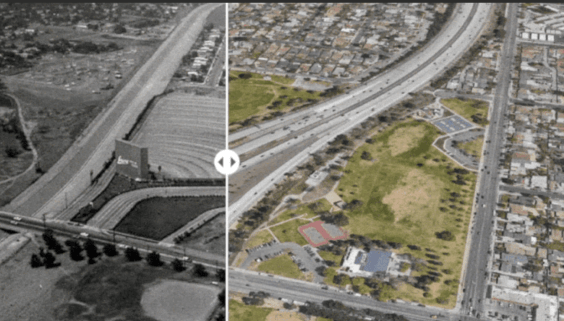It's October 1, the start of the federal government's fiscal year 2013, and the first official day of the MAP-21 transportation law. The law was signed July 6 but got a three-month grace period to let U.S. DOT set guidance and give states a little time to get ready for the new requirements -- things like setting up grant programs to distribute bike/ped funding to local communities (though they can also just squander that money).
The TIFIA loan program can make about $7.5 billion in federal loans this year -- up from $1.2 billion last year, and a stepping stone on the way to an even greater level of lending next year. States are already jockeying to borrow. Of the 11 letters of interest U.S. DOT has received from transportation departments seeking TIFIA credit assistance, all are for roads and bridges, except one for an aviation project. There's nothing for transit, as far as I can tell, especially since Governor Andrew Cuomo's administration has stripped the transit component from New York's Tappan Zee Bridge replacement project. Cuomo is seeking between $2.4 and $2.9 billion for the bridge.
This is what experts warned about when TIFIA funding became a first-come, first-served program: Simple road projects with plans already on the shelf will be easy to submit, whereas transit projects could take longer to apply for.
Though there's reason for concern over the scuttling of TIFIA project selection criteria regarding anything but the ability to pay back the loan, Ray LaHood wrote in a blog entry last week, "Submitting a Letter of Interest is no guarantee of DOT approval. Once all applications are in, they will be held to strict standards." And since a project's place in line is determined by the date of the application, not the letter of interest, these 11 projects might not be winners. Congress will get a full report on the status of the applications at the end of this calendar year.
Although today marks MAP-21's big debut, there are still dozens of elements of the bill that won't take effect for years. For example, at the end of this year, FHWA will issue guidance to states that the Manual on Uniform Traffic Control Devices -- the street design guidebook that is increasingly out of step with America's leading city transportation departments -- "should not be considered a substitute for engineering judgment." Changes to environmental review requirements made as part of Congress's push to "streamline" project delivery will be official next January, with different kinds of projects getting exempted from review at different points over the next few years [PDF].
Next October 1, DOT will designate a primary freight network -- a significant step in the development of a national freight policy. A year from today, the feds will also issue new performance measures for transit maintenance and require seat belts on intercity buses. More performance measures will roll out in April 2014, and the FHWA will report to Congress for the first time about the "Projects of National and Regional Significance" -- a funding category that's expected to pick up some slack if TIGER is curtailed or eliminated -- two years from today.
Then in three years, bridge and tunnel inspection standards will get a much-needed update, and the national freight strategic plan will be released. The final item on MAP-21's agenda -- a rule to install quiet technology to all aircraft doing Grand Canyon air tours -- won't take effect till this date in 2025.
At the same time, before these policy changes take effect, the post-MAP-21 era has already begun. Senator Barbara Boxer and sustainable transportation advocates are champing at the bit to start shaping the next transportation reauthorization and do it better than this one. The overarching task on the to-do list is to finally create some political support for a rational change to how transportation funding is collected and spent, or else the next round of legislating will be far worse than this one.






